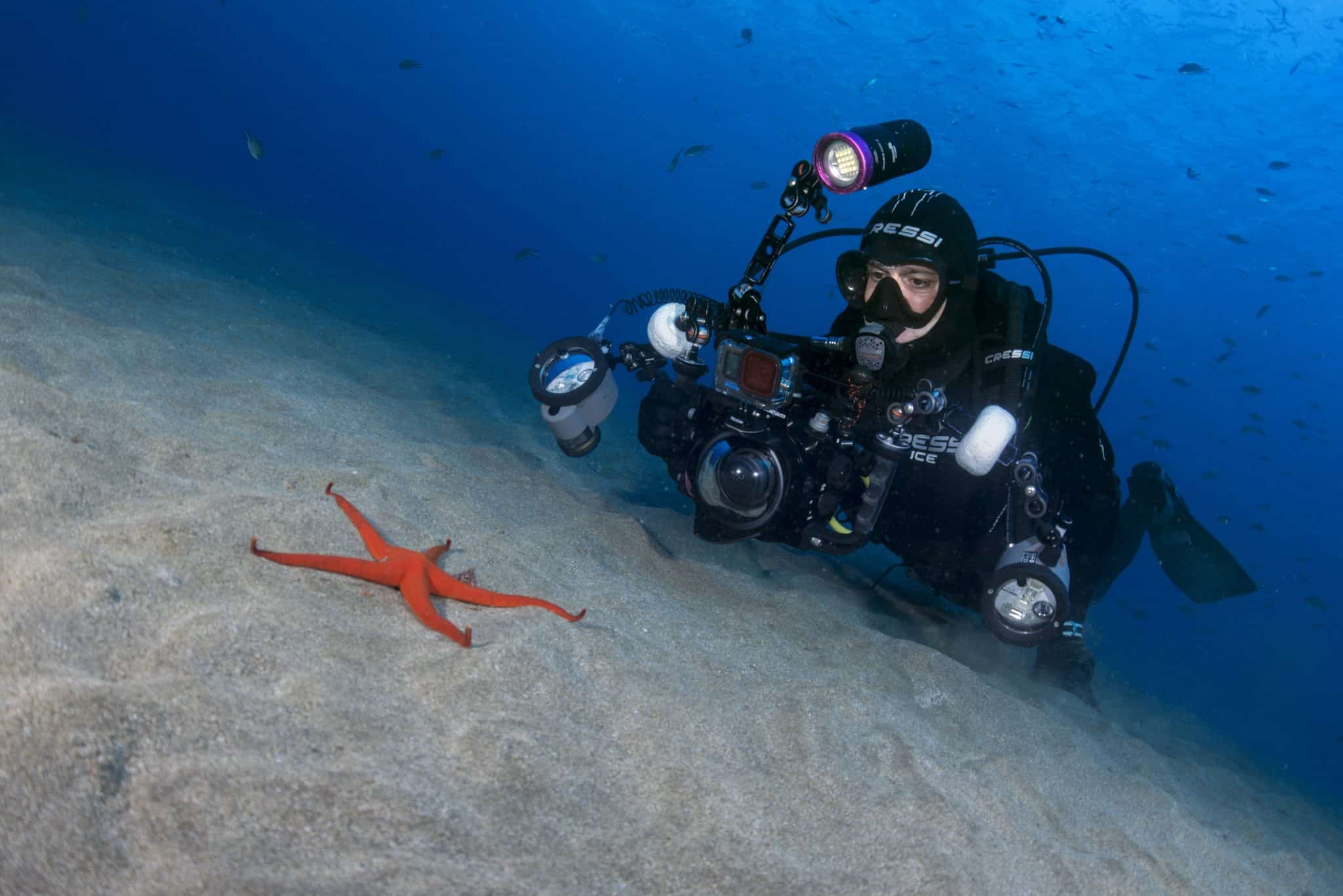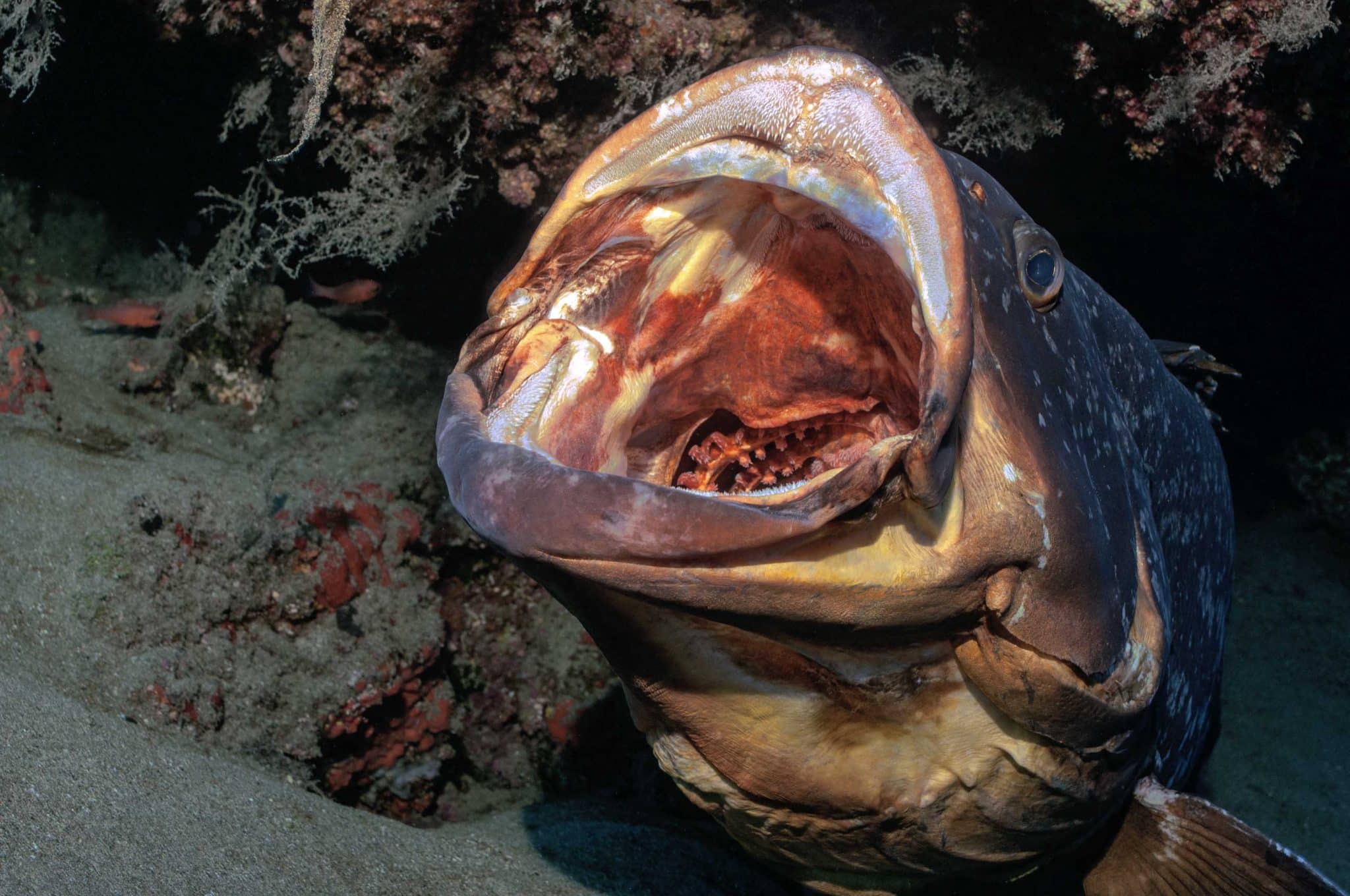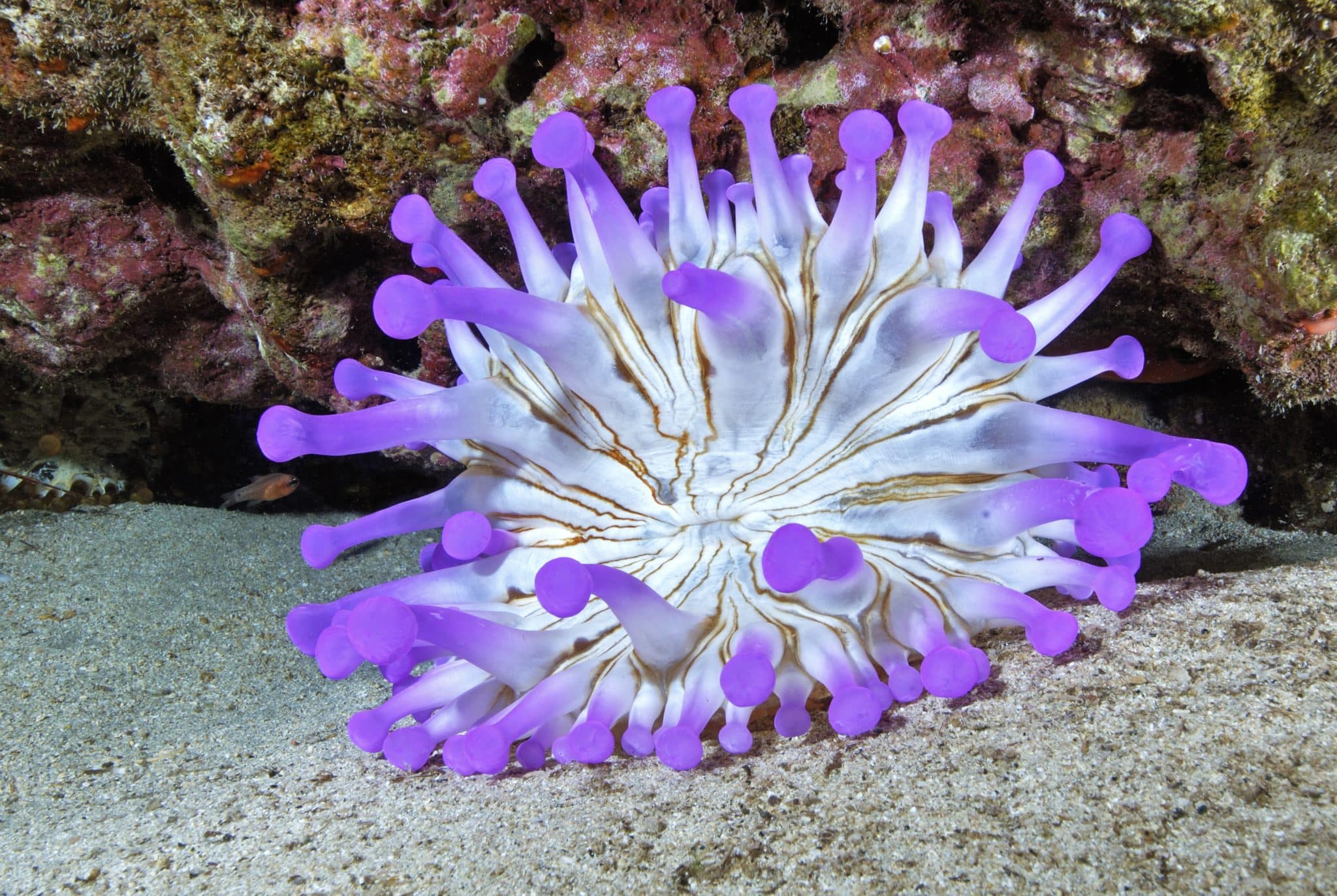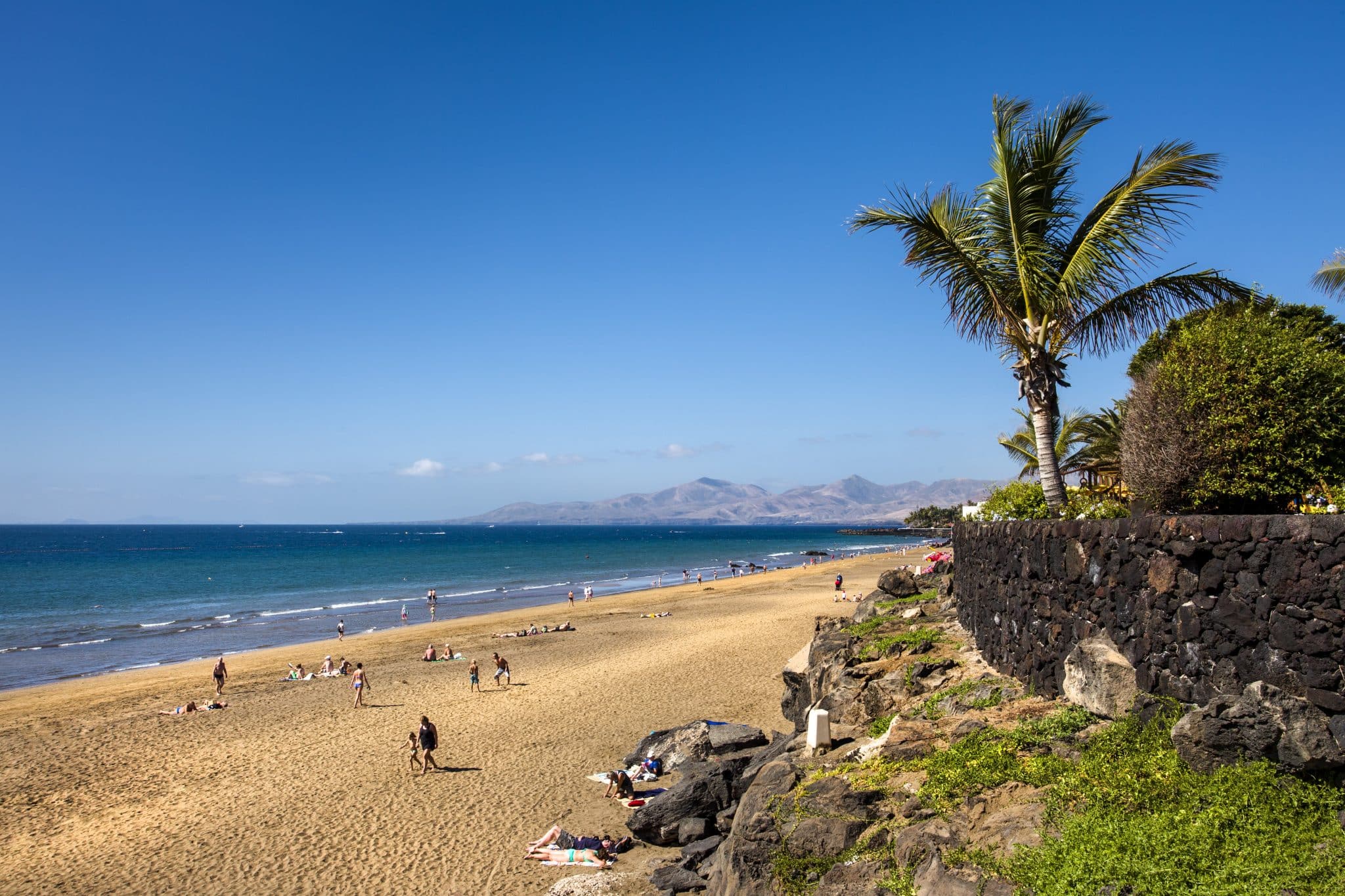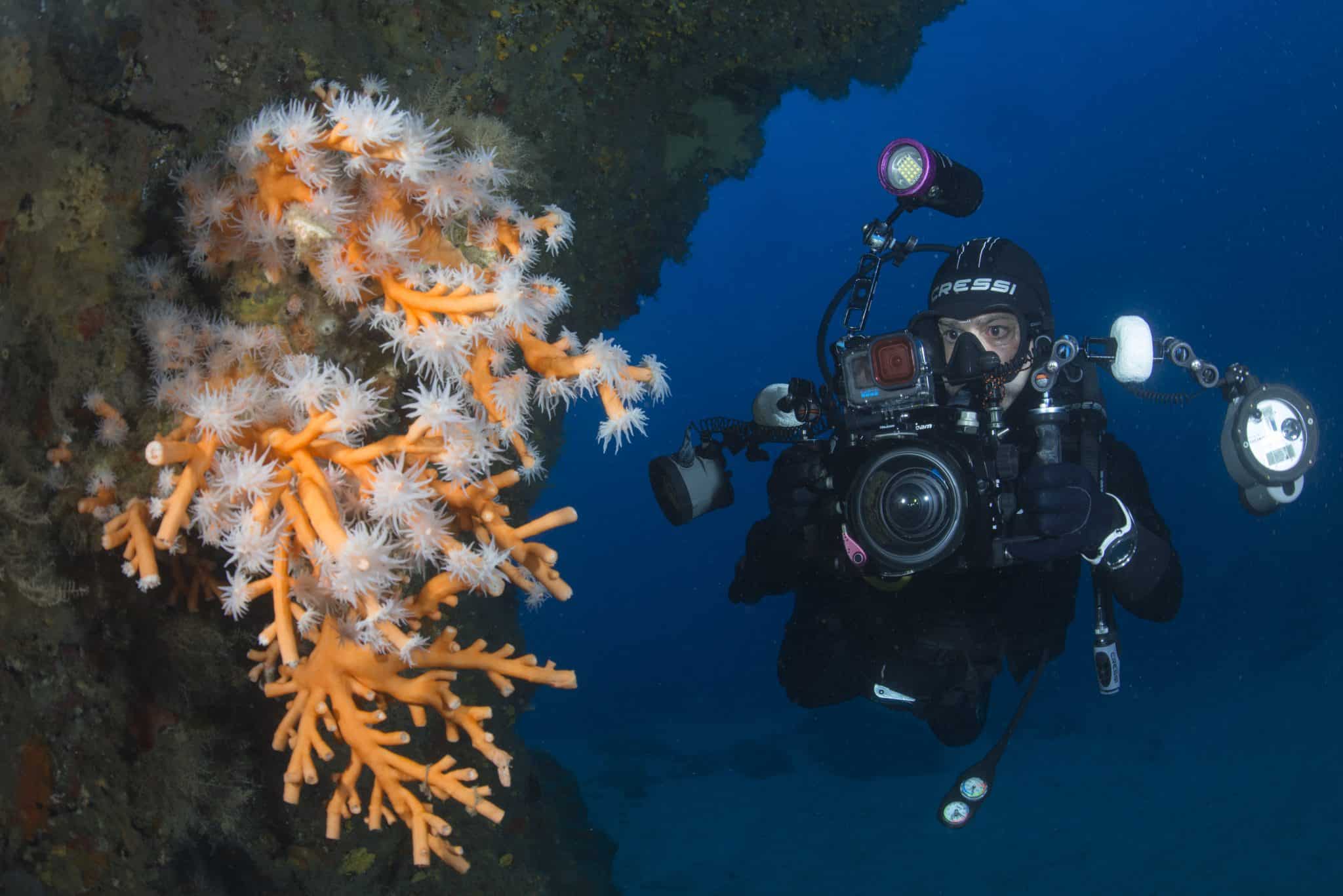

Overview
Fact File
| Capital | Arrecife
|
| Population | 154,900
|
| Languages | Spanish |
| Time | GMT/ GMT +1 in summer |
| International Dialling Code | +34 |
| Currency | Euro € |
| Air temperature (average) | 15°C – 28°C |
| Water temperature (average) | 18°C – 22°C |
| Tourist Board | |
| International Airports | César Manrique-Lanzarote Airport
|
About The Diving
The marine life around the Canary Islands is varied, with an exciting combination of Mediterranean, North Atlantic and endemic species. Sharks, turtles, rays, moray eels, cetaceans, shoaling fish, trigger fish, grouper and a wide range of invertebrates are all found around the islands.
The volcanic rock provides reefs, caves and niches filled with life. The water stays at around 20°C and is known for its excellent visibility of 30-40m.
Photos: Avalon.Red
Video
Dive Highlights
Puerto del Carmen
In the southeast, the main diving hub of Lanzarote is Puerto del Carmen. The wall off the coast of Playa Chica starts at 15m and goes into the blue. Diving here is well suited to advanced and technical divers, with great sites like La Cathedral, an underwater cave; Blue Hole, a volcanic tunnel with amazing light, and Waikiki, home to orange coral and groupers swimming over white sand. For wreck lovers the Quiquere wrecks dive site offers three wooden fishing boats which attract large schools of fish and the Tinosa wrecks site has six sunken ships at various depths.
Playa Blanca
On the southern tip of the island, Playa Blanca has numerous dive sites suitable for all levels, protected from the trade winds and mostly shallow. The Atlantic Museum is the most famous site: it is the only underwater museum in Europe, with an array of sculptures at a max depth of 15m on white sand. Flamingo Beach has a wonderful abundance of marine life with large schools of fish. Barracuda, sardines and tuna surround the wall, while rays and angel sharks can be seen on the sand, and nudibranchs and giant anemones provide some great photo opportunities. El Emisario is known for its twin pipes that divers follow down to the reef, the area is home to moray eels, angel sharks and the occasional turtle.
Archipelago Chinijo, La Graciosa
This group of islands to the northwest are a marine protected area, so the diving can be spectacular although weather dependent at times. The dive sites of La Burrera, with its rocky maze filled with life and La Roncadera, an underwater amphitheater covered in sea fans and huge schools of grunts are two of the most popular dives.
Mala
White sand sloping into the deep blue, framed by volcanic rock make this a special underwater landscape. Experienced and technical divers can enjoy the black coral forests found at 40m and below and the dive sites of Charco del Palo with it’s resident rays, morays and sharks and El Canyon with its gigantic walls and excellent visibility are well worth a visit. Diving here can also be weather dependent.
When To Go
Lanzarote is diveable year round thanks to the spring climate. Some sites are weather dependent, but there will always be other options further round the coast.

